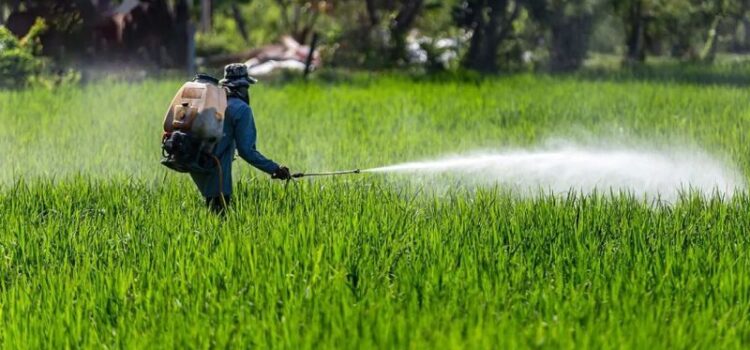Removal of Weeds from Paddy Crops
Paddy is a term commonly used to refer to the rice plant (Oryza sativa) and its crop. Rice is one of the most important staple foods worldwide, providing a significant portion of the caloric intake for billions of people. It’s a cereal grain that is widely cultivated in various regions, particularly in Asia. Chemical weed control in paddy (rice) crops involves the use of herbicides to manage and eliminate unwanted weeds that compete with the rice plants for nutrients, water, and sunlight. Here are some commonly used herbicides for weed control in paddy crops:
1. Pre-Emergence Herbicides:
-
- Pendimethalin: It is a widely used pre-emergence herbicide. It prevents the germination of weed seeds and controls annual grasses and some broadleaf weeds.
- Butachlor: Another pre-emergence herbicide effective against grassy weeds. It needs to be incorporated into the soil.
2. Post-Emergence Herbicides:
-
- 2,4-D (2,4-Dichlorophenoxyacetic acid): It is used to control broadleaf weeds and is often applied after the paddy has emerged.
- Metsulfuron Methyl: This is effective against a range of broadleaf and sedges. It’s a systemic herbicide that is absorbed by the weeds and translocated throughout the plant.
- Bispyribac Sodium: This is often used to control grassy weeds in paddy fields. It’s systemic and provides both pre- and post-emergence control.
- Glyphosate: While it’s not typically used in paddy fields directly due to its non-selective nature (it can harm rice plants as well), it might be used in situations where weeds are a major concern and rice hasn’t emerged yet. It’s important to note that the use of herbicides should be carried out with proper knowledge, following label instructions, and considering factors such as weed species, rice growth stage, and environmental conditions. Misuse or overuse of herbicides can have negative effects on both the crop and the environment.
3. Application of Herbicides in Paddy Crops:
- Timing: Herbicides can be applied either before planting (pre-plant) or after the rice has emerged (post-emergence). The choice depends on the specific herbicide, target weeds, and rice growth stage.
- Spraying Method: Herbicides are usually applied using backpack sprayers, tractor-mounted sprayers, or aerial spraying in larger fields.
- Dosage: The correct dosage specified on the herbicide label should be followed meticulously. Overdosing can harm the crop, while underdosing might not provide effective weed control.
- Safety Precautions: It’s important to follow safety guidelines, wear appropriate protective clothing, and avoid herbicide drift onto non-target areas.






